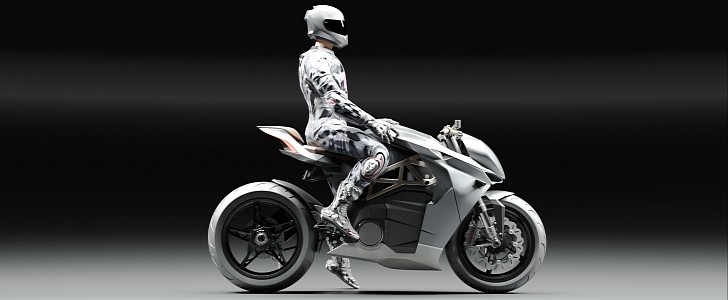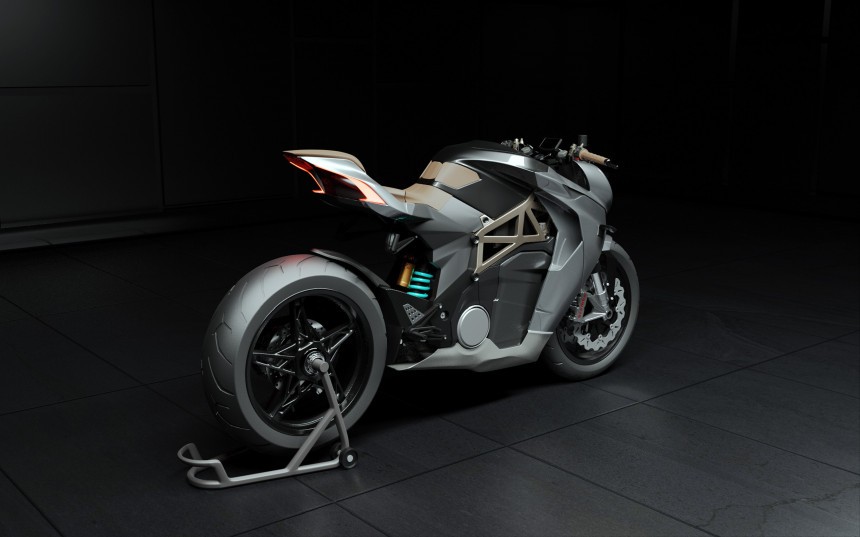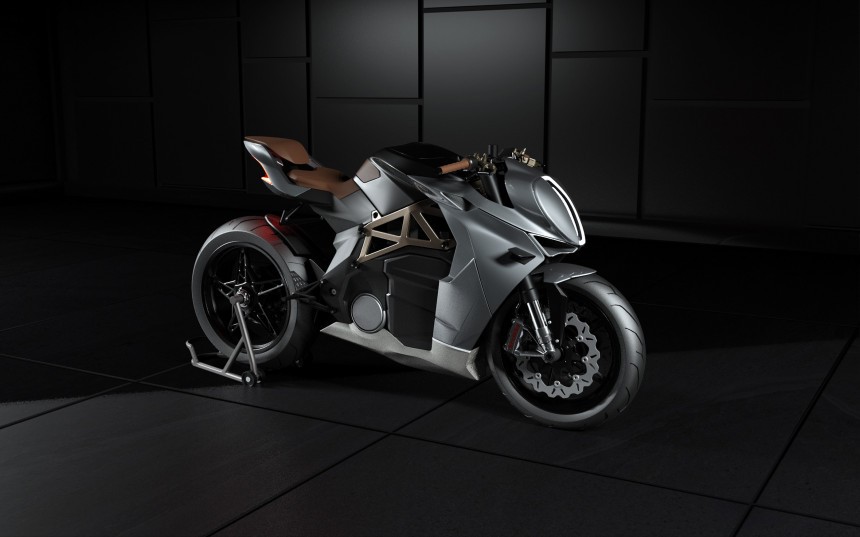Let’s be frank. Every vehicle you see on the streets started out as nothing more than an idea, and from an idea into a visual design. Sadly, most designs stop at this previously mentioned stage, renderings. However, some concepts seem to promise a bit more.
Folks, the vehicle you see here today is a recently released conceptual rendering from the mind of Prathmesh Banubakde, an industrial design student and manipulator of CGI out of India. While his Behance page shows very little about his background, looking at the design before us today, the Aeolian, you can figure out the level of knowledge this gentleman has under his belt.
To make things as clear and simple as possible, know that the Aeolian is designed as an electric hyperbike, and in that also hide a few crucial design elements that affect the overall functionality and shape of the machine.
Drawing its name from the Greek god of wind, Aeolus, the Aeolian is meant to offer a “cunning balance between sharp, abrupt, and soft, smooth profiles” all the while showcasing a race-worthy vehicle, according to the designer at least.
One noticeable feature of this electric motorcycle is that the designer seems to have tried very hard at offering a classic racer body style. In doing so, the Aeolian should appeal to motorcycle and GP racers. This classic style is achieved by the frame construction, and one rendering shows the exact setup onto which Banubakde sets all electrical and non-electrical components.
A main beam and inverted fork setup is used as the base frame, while towards the rear of the bike, a subframe shapes the eventual saddle, and underneath, a linkage suspension yields a swingarm where the eventual drivetrain will be housed.
From here, the designer introduces the remaining components that make this electric wonder what it is. One of the most important features needed for electric power is a battery pack. Since this component is often the heaviest in an electric drive system, the mounting position is of the utmost importance for a safe and functional ride.
For the Aeolian, Banubakde mounted the battery pack at the front of the frame and as low to the ground as possible. This achieves a great center of gravity but is also determines the shape of the bike and the way air flows around the EV. Right above the battery is a radiator that sits neatly hidden behind the fork, and at the top, positioned where a gas tank would be, a CPU unit controls all energy flow and safety system.
Those systems are all aimed at one thing and one thing only, speed. To achieve GP-level speeds and thrills, the Aeolian is driven by a mid-mounted, chain-driven motor, as any serious electric motor-anything should be.
All that sounds nice and wonderful until you realize that the designer also included an alternator aboard the EV. Why? I'm not so sure. Maybe some sort of regenerative properties? Overall, the Aeolian is equipped with 75 kW of energy, but how long that will last for is not specified.
The rest of the concept is mostly panel-work. Again, with the idea of creating a vehicle made to resemble the tried and tested design of racing motorcycles, the shape and lines of the bike are all meant to be as aerodynamic as possible. Even the rider’s position is one that sets him or her over the would-be gas tank and into a primed and aerodynamic position.
Finally, Banubakde mentions that only “premium materials” will be used in the construction of the Aeolian and ones that express “performance and luxury.” What sort of materials those may be isn’t specified, but we can see carbon fiber and what could be synthetic or leather seat covers. LED lighting completes the rest of the bike.
As an application of a design student’s knowledge of aerodynamics and electrical systems and proper placement of such systems in an electric motorcycle, the Aeolian seems to offer a promising layout, but I still can’t figure out what that alternator is doing in all this. So, what do you think of this fresh design?
To make things as clear and simple as possible, know that the Aeolian is designed as an electric hyperbike, and in that also hide a few crucial design elements that affect the overall functionality and shape of the machine.
Drawing its name from the Greek god of wind, Aeolus, the Aeolian is meant to offer a “cunning balance between sharp, abrupt, and soft, smooth profiles” all the while showcasing a race-worthy vehicle, according to the designer at least.
One noticeable feature of this electric motorcycle is that the designer seems to have tried very hard at offering a classic racer body style. In doing so, the Aeolian should appeal to motorcycle and GP racers. This classic style is achieved by the frame construction, and one rendering shows the exact setup onto which Banubakde sets all electrical and non-electrical components.
From here, the designer introduces the remaining components that make this electric wonder what it is. One of the most important features needed for electric power is a battery pack. Since this component is often the heaviest in an electric drive system, the mounting position is of the utmost importance for a safe and functional ride.
For the Aeolian, Banubakde mounted the battery pack at the front of the frame and as low to the ground as possible. This achieves a great center of gravity but is also determines the shape of the bike and the way air flows around the EV. Right above the battery is a radiator that sits neatly hidden behind the fork, and at the top, positioned where a gas tank would be, a CPU unit controls all energy flow and safety system.
Those systems are all aimed at one thing and one thing only, speed. To achieve GP-level speeds and thrills, the Aeolian is driven by a mid-mounted, chain-driven motor, as any serious electric motor-anything should be.
The rest of the concept is mostly panel-work. Again, with the idea of creating a vehicle made to resemble the tried and tested design of racing motorcycles, the shape and lines of the bike are all meant to be as aerodynamic as possible. Even the rider’s position is one that sets him or her over the would-be gas tank and into a primed and aerodynamic position.
Finally, Banubakde mentions that only “premium materials” will be used in the construction of the Aeolian and ones that express “performance and luxury.” What sort of materials those may be isn’t specified, but we can see carbon fiber and what could be synthetic or leather seat covers. LED lighting completes the rest of the bike.
As an application of a design student’s knowledge of aerodynamics and electrical systems and proper placement of such systems in an electric motorcycle, the Aeolian seems to offer a promising layout, but I still can’t figure out what that alternator is doing in all this. So, what do you think of this fresh design?















